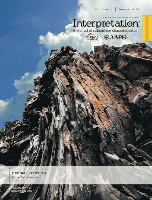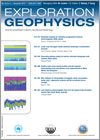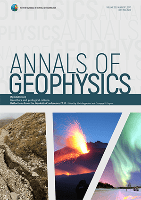
Journal of Geophysics and Engineering
Scope & Guideline
Pioneering Research in Geophysics and Engineering
Introduction
Aims and Scopes
- Geophysical Imaging and Inversion Techniques:
The journal publishes research on advanced imaging techniques such as reverse time migration, full-waveform inversion, and seismic inversion methods. These studies often focus on improving resolution and accuracy in subsurface imaging. - Machine Learning and Artificial Intelligence Applications:
There is a significant emphasis on the application of machine learning algorithms in geophysical data processing, analysis, and interpretation, showcasing innovations in deep learning and neural networks for enhancing geophysical methodologies. - Exploration and Characterization of Natural Resources:
Research articles often address the exploration and characterization of resources, such as hydrocarbons, geothermal energy, and mineral deposits, utilizing geophysical methods to assess reservoir potential and geomechanical properties. - Environmental Geophysics and Monitoring:
The journal includes studies on the application of geophysical techniques for environmental monitoring, including groundwater assessment, contamination detection, and the evaluation of geohazards. - Numerical Simulation and Theoretical Studies:
A core focus is placed on numerical simulations of wave propagation and geophysical processes, alongside theoretical studies that contribute to understanding the underlying principles of geophysical phenomena.
Trending and Emerging
- Integration of AI and Data Science in Geophysics:
The incorporation of artificial intelligence and data science techniques, particularly deep learning, is on the rise, leading to advancements in data analysis, noise reduction, and predictive modeling in geophysical studies. - Sustainable Geophysical Practices:
There is a growing emphasis on sustainable practices within geophysics, particularly in the context of resource extraction and environmental impact assessments, reflecting a broader trend towards sustainability in engineering. - Geophysical Monitoring of Subsurface Processes:
Research focusing on real-time monitoring of subsurface processes, such as hydraulic fracturing and geothermal energy extraction, is gaining traction, emphasizing the need for continuous assessment of geophysical phenomena. - Interdisciplinary Approaches to Geophysical Challenges:
An increasing number of studies are adopting interdisciplinary approaches, combining geophysics with geology, hydrology, and materials science to address complex subsurface challenges, indicating a shift towards collaborative research efforts. - Enhanced Imaging Techniques for Complex Environments:
Innovations in imaging techniques, especially in complex geological settings, are trending, with a focus on improving accuracy and resolution in subsurface characterization.
Declining or Waning
- Traditional Geophysical Survey Techniques:
There has been a decline in papers focused solely on traditional survey methods such as gravity and magnetic surveys, as newer technologies and integrated approaches gain preference. - Basic Signal Processing Techniques:
Research centered around basic signal processing methods is appearing less frequently, possibly due to the rapid advancement and preference for more sophisticated algorithms and machine learning techniques. - Geophysical Applications in Civil Engineering:
There is a noticeable reduction in studies specifically applying geophysical methods to civil engineering problems, as the focus shifts towards more specialized applications in resource exploration and environmental monitoring.
Similar Journals

Interpretation-A Journal of Subsurface Characterization
Advancing the Science of Subsurface InsightsInterpretation: A Journal of Subsurface Characterization is a premier academic journal dedicated to advancing the methodologies and technologies integral to the characterization of subsurface environments. Published by the Société de l'Exploration Geophysicists (SEG), this journal serves the fields of geology and geophysics, reflecting its critical role in the intersection of these domains. With an h-index that underscores its scholarly impact and its ranking in the Q2 category for both Geology and Geophysics, Interpretation is recognized for publishing high-quality, innovative research that offers valuable insights and solutions to contemporary challenges in subsurface exploration. Since its inception in 2013, the journal has quickly become essential reading for researchers, professionals, and students alike, providing open access to a wealth of knowledge fostering collaboration and advancement within the geoscience community. Featuring a comprehensive range of studies, methodologies, and reviews, Interpretation is integral for professionals striving to enhance their understanding of subsurface dynamics and impacting areas such as resource management, environmental conservation, and hazard assessment.

Geodynamics
Connecting Research and Real-World Geophysical ChallengesGeodynamics is an emerging scholarly journal published by LVIV POLYTECHNIC NATIONAL UNIVERSITY, dedicated to advancing knowledge in the fields of Earth and Planetary Sciences, with a particular emphasis on Geophysics, Geology, and related specialties. Featuring both ISSN 1992-142X and E-ISSN 2519-2663, this journal aims to publish high-quality research that addresses critical challenges in geodynamic processes and their implications on our planet's systems. Despite its nascent status, having converged years from 2023 to 2024, Geodynamics is poised to attract attention in the academic community, especially as evidenced by its rankings in Scopus, which position it prominently within the discipline. The journal's commitment to open access ensures that cutting-edge research is readily available to the global scientific community, fostering collaboration and innovation. Researchers, professionals, and students will find Geodynamics an essential resource for the latest findings and discussions in geodynamics and related fields, making it an invaluable addition to the landscape of environmental science journals.

SURVEYS IN GEOPHYSICS
Exploring the Depths of Earth Science InnovationSURVEYS IN GEOPHYSICS is a leading academic journal published by SPRINGER that has been at the forefront of advancing the field of geophysics and geochemistry since its inception in 1986. With an impressive impact factor and consistently ranked in the top quartile (Q1) of its categories—Geochemistry and Petrology, and Geophysics—this journal represents a vital resource for researchers and professionals alike. The journal is indexed in Scopus, where it ranks among the top ten in both Earth and Planetary Sciences sectors, reflecting its high citation rates and significant contributions to the field. Although not an open access journal, SURVEYS IN GEOPHYSICS provides invaluable insights into contemporary research trends and methodologies, fostering a deeper understanding of the physical processes that shape our planet. The journal welcomes original research articles, comprehensive reviews, and surveys that significantly contribute to our knowledge of geophysical phenomena and are dedicated to supporting the academic community through rigorous peer review and publication. Located in the Netherlands, SURVEYS IN GEOPHYSICS continues to establish itself as an essential platform for scholarly exchange and innovative ideas.

Journal of Himalayan Earth Sciences
Exploring the Earth's Mysteries of the HimalayasThe Journal of Himalayan Earth Sciences (ISSN: 1994-3237; E-ISSN: 2305-6959) is a distinguished publication by UNIV PESHAWAR, dedicated to advancing knowledge in the field of earth sciences, particularly as they relate to the Himalayan region. Established in 2013, this journal aims to provide a platform for researchers, professionals, and students to share original research findings, reviews, and innovative methodologies that contribute to the understanding of geological and environmental phenomena in this ecologically significant area. Despite being categorized in Q4 of the Earth and Planetary Sciences, the journal showcases valuable contributions to the scientific community and encourages submissions that delve into both the challenges and advancements within Earth sciences, with a particular focus on the unique geological structures and processes of the Himalayas. As an open-access journal, it ensures that research is accessible to a global readership, promoting collaboration and discussion among scholars and practitioners. The journal's operational base in Peshawar, Pakistan, places it at the heart of Himalayan research, making it an invaluable resource for those invested in earth sciences.

GEOPHYSICAL JOURNAL INTERNATIONAL
Advancing the Frontiers of Earth SciencesGEOPHYSICAL JOURNAL INTERNATIONAL, published by the esteemed Oxford University Press, stands as a premier platform for advancing research in the realms of Geophysics and Geochemistry. With a rich history spanning from 1922 to 2024, this journal not only adheres to the highest scholarly standards but has also achieved remarkable recognition, evidenced by its impressive ranking in the Scopus database—#32 in Geophysics and #48 in Geochemistry and Petrology, placing it within the top quartiles of its field. Researchers and professionals will appreciate its comprehensive scope and commitment to disseminating vital research findings, which significantly contribute to our understanding of the Earth's processes. Although it does not offer open access, the journal's Q1 quartile status underscores its influence and importance in shaping contemporary scientific discourse. Whether you are a seasoned researcher or a budding student, GEOPHYSICAL JOURNAL INTERNATIONAL is an indispensable resource for essential knowledge and groundbreaking studies in the geophysical sciences.

Exploration Geophysics
Fostering Collaboration in Earth Sciences for a Better TomorrowExploration Geophysics is a prestigious journal published by Taylor & Francis Ltd., prominently focusing on the interdisciplinary fields of geology and geophysics. Established in 1970 and continuing its legacy to 2024, this journal serves as a vital platform for researchers, professionals, and students alike, disseminating cutting-edge research and innovative methodologies in earth sciences. With a robust impact factor that highlights its academic influence, and classified in the Q3 category for both geology and geophysics, it ranks among the notable publications in the field, placing it in the 51st and 50th percentiles of its respective categories. Although available through standard subscription access, the journal encourages engagement from a diverse readership aimed at exploring the intricacies of earth processes, resource exploration, and environmental evaluations. By contributing valuable insights and fostering collaborations, Exploration Geophysics continues to play a crucial role in advancing the understanding of our planet's subsurface dynamics.

Applied Geophysics
Bridging Theory and Application in GeophysicsApplied Geophysics is a premier journal dedicated to the interdisciplinary study of geophysical processes and their applications across various domains, published by SPRINGER. With an ISSN of 1672-7975 and an E-ISSN of 1993-0658, this journal serves as a pivotal platform for researchers, professionals, and students to share their latest findings and insights in the field of geophysics. Operating from China, the journal has established itself within the Q3 quartile in Geophysics as of 2023, reflecting its commitment to high-quality research, even as it ranks #105 out of 165 in the Earth and Planetary Sciences category, placing it in the 36th percentile on Scopus rankings. This makes it an essential resource for advancing knowledge in geophysical methodologies and applications. While it operates in a traditional subscription model, its relevance and timeliness ensure it remains a crucial outlet for emerging scientific discussions. The journal particularly encourages the integration of practical applications with theoretical frameworks, fostering innovation in areas such as environmental geophysics, resource exploration, and hazard assessment.

ANNALS OF GEOPHYSICS
Connecting Researchers to the Heart of GeophysicsANNALS OF GEOPHYSICS is a prestigious open access journal dedicated to the advancement and dissemination of research in the field of geophysics. Published by the IST NAZIONALE DI GEOFISICA E VULCANOLOGIA in Italy, this journal has embraced open access since its inception in 1948, promoting wide accessibility to cutting-edge research. With an impressive Scopus ranking, placing it in the 52nd percentile within Earth and Planetary Sciences for the category of Geophysics, the journal serves as a vital platform for scholars, researchers, and practitioners seeking to explore the intricate phenomena of our planet. Covering a diverse range of topics in the geophysical community, the ANNALS OF GEOPHYSICS invites contributions that push the boundaries of our knowledge and understanding of geophysical processes, aiding in the development of innovative solutions to urgent environmental challenges. Published continuously from 2002 to 2024, the journal’s commitment to quality and rigor is reflected in its Q3 quartile ranking for 2023, making it a notable resource for the academic community.

Acta Geodynamica et Geomaterialia
Bridging Disciplines to Illuminate Earth's ComplexitiesActa Geodynamica et Geomaterialia is a well-regarded journal published by the Academy of Sciences of the Czech Republic, Institute of Rock Structure and Mechanics. Since its inception in 2004, this journal has established itself as a vital resource within the realms of Geology, Geophysics, and Geotechnical Engineering, categorized in the Q3 quartile across these fields as of 2023. With a focus on innovative research that addresses complex Earth dynamics and material behavior, it provides a platform for scholars and professionals to disseminate their findings and foster academic discourse. The journal holds an important position in the academic landscape, particularly for those engaged in interdisciplinary studies bridging geology and engineering. Although it is not an open access publication, its content remains pivotal for advancing knowledge and practices within these areas, making it an essential read for researchers and students alike. The journal's operational address is located in the vibrant city of Prague, Czech Republic, further enriching its academic character.

STUDIA GEOPHYSICA ET GEODAETICA
Exploring Earth's Mysteries Through Rigorous ResearchSTUDIA GEOPHYSICA ET GEODAETICA, published by Springer, is a prestigious scientific journal that has been at the forefront of the fields of Geochemistry, Petrology, and Geophysics since its inception in 1957. With an ISSN of 0039-3169 and an E-ISSN of 1573-1626, the journal serves as a vital platform for disseminating original research and reviews that enhance our understanding of the Earth’s processes. Situated in the Netherlands, the journal is indexed in notable databases, holding a respectable Tier Q3 ranking in both Geochemistry and Petrology, as well as Geophysics, based on the 2023 metrics. With its commitment to academic rigor, the journal seeks to engage a diverse audience of researchers, professionals, and students, facilitating vital discourse and advancements in Earth sciences. Although it does not currently offer open access options, it remains a significant resource for those aiming to contribute to or further their knowledge within these critical disciplines.